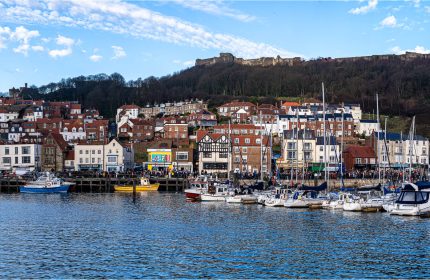7 of the best woodland walks in the UK and Ireland to see bluebells
The bell-shaped flowers bloom in April and May – but the Woodland Trust is warning to take care while you enjoy them.
A swathe of bluebells blanketing a shady woodland spot is one of the most beautiful sights to behold in spring.
Blooming in April and May, the vibrant flowers are a vital source of pollen and nectar for butterflies, hoverflies and bees – the latter can actually ‘steal’ the sugary liquid without the need to pollinate it by biting a hole in the bottom of the flower.
The bell-shaped beauties are particularly delicate, however. They take at least five years to establish and colonise, and damaged bulbs cannot produce enough energy to flower and reproduce, so it’s important to take care when walking through woods.
Sally Bavin, Woodland Trust assistant conservation officer, says: “They are often found in ancient woodlands because large colonies take so long to establish. The early blooms provide an important source of pollen and nectar for emerging insects.
View this post on Instagram
“But many ancient woodlands where bluebells were found have been destroyed over the years, so the special places which remain are extremely precious. It is vital for us to safeguard these.
“We can all help with this by ensuring we do not damage the delicate flowers by keeping to the paths and keeping dogs from trampling through patches of bluebells.”
So stay on the paths, keep dogs on a short lead and take litter home with you. You should also never pick the wild flowers either – not least because, according to legend, if you do you’ll be led astray by fairies, never to be found again.
Here are seven picturesque places to see bluebells blooming this spring.
1. Kinclaven Bluebell Wood, Perthshire
View this post on Instagram
Take the Oakwood Loop trail through Kinclaven Bluebell Wood (woodlandtrust.org.uk) in Perthshire, Scotland, to see the flowers in full bloom. If you’re lucky you might even spy a red squirrel or two.
2. Nidd Gorge, Yorkshire

Comprising of five woods, Nidd Gorge is a steep-sided valley near Knaresborough in North Yorkshire. The River Nidd runs through the gorge, which has an interesting history – some Iron Age ramparts are still visible in places.
3. Killinthomas Woods, County Kildare
View this post on Instagram
There are 10km of signposted walking trails spread over 200 acres at Killinthomas Woods (intokildare.ie) in County Kildare. As well as bluebells, in spring you’ll find pretty white wild garlic flowers blossoming on the forest floor.
4. Hole Park Gardens, Kent
View this post on Instagram
A former Kent Garden of the Year winner, Hole Park country house (holepark.com) is surrounded by 16 acres of beautiful gardens. You can check the handy bluebell barometer online to find the optimal time to see the flowers in bloom.
5. Powerscourt Estate, County Wicklow
View this post on Instagram
Surrounding the grand Powerscourt Estate country house (powerscourt.com) in County Wicklow, there are lots of walking trails suitable for different abilities. Head up the Derrybawn Woodland Trail past spectacular Poulanass Waterfall to where you’ll find bluebells sprouting in spring.
6. Blickling Estate, Norfolk
View this post on Instagram
From the formal gardens of Kent’s Blickling Estate (nationaltrust.org.uk) to the Great Wood surrounding the property, you’ll spoilt for bluebell-spotting opportunities.
7. Graig Fawr, Wales

Every spring the beech woodland of Graig Fawr near Port Talbot in South Wales, explodes with colour as the bluebells blossom throughout the forest.
The Press Association
Latest posts by The Press Association (see all)
- BBC to air two-part Call The Midwife Christmas special - December 23, 2024
- 6 mind sports to exercise your brain and keep you sharp - December 20, 2024
- Quiz: What classic Christmas food or drink are you? - December 20, 2024
- Leftover turkey and watercress pie - December 20, 2024
- Catherine and William choose family shot for Christmas card photograph - December 19, 2024




















